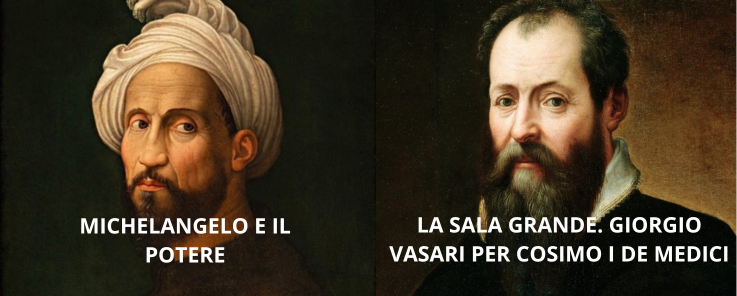Michelangelo and Vasari "protagonists" at Palazzo Vecchio
Fr., 01/17/2025 - 14:04
Palazzo Vecchio Museum hosts two exhibitions dedicated to two great masters of the Florentine Renaissance: Michelangelo Buonarroti and Giorgio Vasari.
The two masters were linked by a friendship that consolidated when the architect began working in Rome for Cardinal Alessandro Farnese, but whose beginnings date back to the years of Vasari's first stay in Florence, between 1542 and 1543.
For Michelangelo Vasari was “Messer Giorgio”, the “dear friend”, while Vasari called him Michele Agnolo, the “divine and wonderful artist” considering having known him as the greatest of infinite human happiness.
And maybe it is no coincidence that Palazzo Vecchio hosts “Michelangelo and Power” until January 26, 2025, an exhibition dedicated to the political vision of the Florentine Genius, and “The Great Hall. Giorgio Vasari for Cosimo I de Medici” until March 9, 2025, an exhibition dedicated to the genesis and grandeur of the Salone dei Cinquecento.
“Michelangelo and the Power”, in a journey of more than 50 works including sculptures, paintings, drawings, autographed letters and plaster casts, tells us about Michelangelo’s relationship with power, his political vision and his relations with the powerful of the time. Among the works on display is the bust of Brutus, exhibited for the first time in history at Palazzo Vecchio: an ideal portrait of the tyrannicide, the work can be considered a political manifesto.
“The Great Hall. Giorgio Vasari for Cosimo I de Medici” tells us about the transformation that affected the Great Hall of Palazzo Vecchio in the 16th century, making it the emblem of the Medici power, today known as the Salone dei Cinquecento. In 1565, Cosimo I de Medici, on occasion of the wedding of his son Francesco to Giovanna d’Asburgo, entrusted Giorgio Vasari with the decoration of the room. The project involved a group of artists and craftsmen, committed to raising the walls by seven meters and creating a coffered ceiling that celebrated the Medici virtues and the military exploits of Florence. Through drawings, historical documents and preparatory works on display, the exhibition reconstructs the creative and technical process that led to the decoration of the hall.
